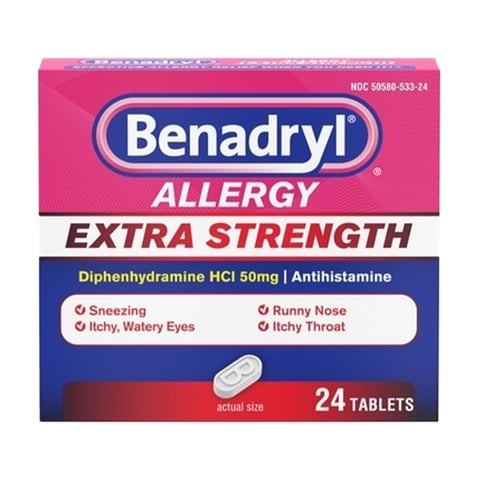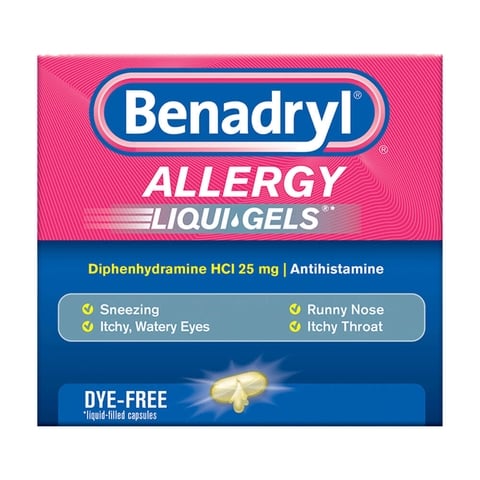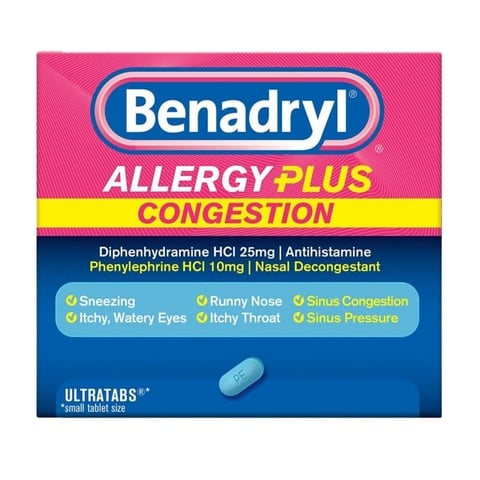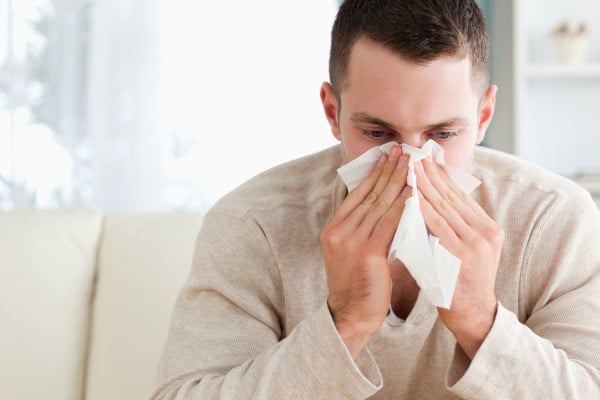Definition: What Is Histamine and What Does it Do?
You may wonder what happens in between an allergy trigger and the allergy symptoms you feel. The answer lies in a cascade of signals in your immune system, and one of them is histamine.
Histamine is a chemical that is released by white blood cells in your body when your immune system is defending against an allergy trigger, such as pollen, mold, or pet dander. The release of histamine sets off a chain reaction in your body that leads to allergy symptoms, such as runny nose and itchy eyes.
How Histamine Functions in the Body
Histamine is a signal in your immune system that tells your body to fight off invaders. It increases blood flow and causes inflammation in nearby tissue, which makes it easier for your immune system to target the invader.
It’s like putting a big sign on the allergy trigger to show your body that it is not supposed to be there. You sneeze, your eyes water, and your skin itches, all because your immune system wants to get the invader out of the body.
Histamine signals the stomach to make stomach acid, and it helps the brain to stay awake. Histamine’s actions are great for protecting the body against parasites or infections.
But with allergies, the immune system overreacts to harmless substances, not parasites. This is when histamine causes allergy symptoms.
Which Cells Are Involved in Histamine Release?1
Mast cells and basophils are specific types of white blood cells that produce and store histamine. Mast cells are found in connective tissue all throughout your body, especially near the skin, blood vessels, nerves, lungs, and intestines. Basophils are found in the bloodstream.
When your body encounters an invader, like a parasite or infection, your immune system reacts to defend the body from attack. This triggers a cascade of many chemical reactions in your body. Some of these reactions happen in immune cells called B cells. These cells make a certain type of chemical called IgE antibodies, which signal other immune cells, such as mast cells and basophils, to be on the lookout for specific invaders.
When mast cells and basophils come into contact with the targeted invader, they release histamine and other chemicals.
The Relationship between Histamine and Allergy Symptoms
When histamines are released, the blood vessels around the area become leakier to their surroundings. What does this leakiness mean? It’s like opening gates to allow more protective white blood cells and immune system substances into the area to fight an invader.
When you have allergies, your immune system sees the allergy trigger as a threat, and it reacts as if the trigger is a dangerous invader by releasing histamine. The leakier blood vessels and increased inflammation lead to the allergy symptoms you experience.
Your immune system works to get the allergy trigger out of your body and off of your skin as quickly as possible by causing allergy symptoms such as:
- Runny nose
- Sore or itchy throat
- Itchy nose or eyes
- Lung constriction, making it harder to breath
- Red skin rash or hives
- Itchy skin
- Vomiting and diarrhea, from food allergy triggers
What Allergens Can Trigger a Histamine Response?
Allergy triggers are not harmful to the body the same way that parasites or infections are—but when your immune system overreacts, histamine is released as if the allergy trigger is an invader.
Here are some common allergy triggers that can cause a histamine response in some people:
- Pollen
- Pet dander
- Mold
- Dust mites
- Insect stings
- Certain foods, such as milk, eggs, or peanuts
About Antihistamines and Histamine Blockers
Antihistamines are drugs that block histamine from binding to H1 receptors in the body. Antihistamines such as diphenhydramine HCl, the main active ingredient in Benadryl®, are medicines used for relief from allergy symptoms related to hay fever, upper respiratory allergy, allergic rhinitis, or cold symptoms, among other indications.
For temporary relief of allergy symptoms in adults and children 6 years and older, consider BENADRYL® Allergy ULTRATABS® Tablets with diphenhydramine 25 mg. For children ages 6 to 11 years, consider Children’s BENADRYL® Allergy Liquid with diphenhydramine 12.5 mg per 5 mL.
For congestion or sinus pressure, BENADRYL® Allergy Plus Congestion might be right for you. It combines the antihistamine diphenhydramine HCl with the powerful decongestant phenylephrine HCl to help relieve your worst congestion and allergy symptoms.
(Note: Other drugs are H2 blockers, also called histamine H2 antagonists, which are used for stomach ailments. They work by reducing the amount of acid produced by the stomach. H2 blockers are not in the same class of drugs as antihistamines, and they are not used for allergy symptoms. Examples of H2 blockers are ranitidine, famotidine, and cimetidine.3)
Related Products
Related Articles
References
- Medline Plus. Histamine: The Stuff Allergies Are Made Of. September 8, 2017. Accessed from: https://medlineplus.gov/medlineplus-videos/histamine-the-stuff-allergies-are-made-of/
- Comas-Basté O, Sánchez-Pérez S, Veciana-Nogués MT, Latorre-Moratalla M, Vidal-Carou MDC. Histamine Intolerance: The Current State of the Art. Biomolecules. 2020;10(8):1181. Published 2020 Aug 14. doi:10.3390/biom10081181 https://www.ncbi.nlm.nih.gov/pmc/articles/PMC7463562/
- Mayo Clinic. Histamine H2 Antagonist (Oral Route, Injection Route, Intravenous Route). May 1, 2022. Accessed from: https://www.mayoclinic.org/drugs-supplements/histamine-h2-antagonist-oral-route-injection-route-intravenous-route/description/drg-20068584





